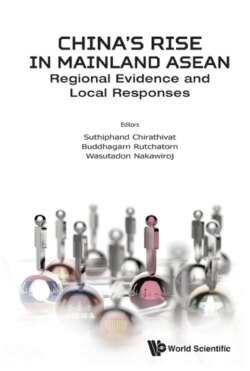Читать книгу China's Rise in Mainland ASEAN - Группа авторов - Страница 22
На сайте Литреса книга снята с продажи.
2.4.The Policies and Pathways of China’s New Era
ОглавлениеHow will the above-mentioned goals and characteristics of China’s New Era be accomplished? What are the policies and pathways for China’s New Era? These questions are obviously not simple ones and involve many dimensions of planning and undertaking. However, one of the most recent and interesting sources from which we may be informed of Xi Jinping’s thoughts on this matter is his speech delivered at the opening of the 2018 Boao Forum for Asia (BFA) in Hainan Province on April 10, 2018. Established by political leaders from 26 Asian countries, including Australia, in 2001, the Boao Forum, which functions as an international non-governmental organization with its headquarters in Boao on the island and province of Hainan of China, has been recognized as the Asian equivalent of the World Economic Forum in Davos, Switzerland. As was remarked in the news reported by Xinhua, Xi’s presence and speech at this significant event of BFA was indeed his “first home-court diplomacy since he was unanimously re-elected Chinese president.” It clearly reflects, as the headline of the news states, a “New Chapter for ‘Xiplomacy’” (Lu, 2018a).
Towards the end of this speech, Xi Jinping succinctly summed up that “In short, China will enter a new phase of opening-up” (Xi, 2018, p. 10). Xi recounted China’s experience during the past 40 years after the reform and opening up, or “China’s second revolution” as he put it, was launched (Xi, 2018, p. 4). Under this long period of development and perseverance, Xi confirmed, “China has lived up to its responsibility as a major country. From ‘bringing in’ to ‘going global’, from WTO accession to the Belt and Road Initiative,... China has become a key anchor and driver for the world economy and a positive force in advancing the noble cause of global peace and development” (Xi, 2018, p. 4). And in this new phase China will pursue policies of further opening up, including, first, broadening market access, second, creating a more attractive investment environment, third, strengthening protection of intellectual property rights (including, of course, China’s intellectual proper rights), and fourth, taking the initiative to expand imports (Xi, 2018, pp. 8–9). Xi ended the speech by referring to the Belt and Road Initiative (BRI) that has, to date, been joined by more than 80 countries in the world. He reemphasized its main objective as a project for international cooperation with a view to creating opportunities and outcomes for the benefit of the world and all peoples. It is by no means a part of any “geopolitical calculation,” and thus contains no agenda to create any international bloc among nations or impose any business deal on others. The development of the project, Xi insisted, will rely on “the principle of extensive consultation, joint contribution and shared benefits” (Xi, 2018, p. 10).
That the BRI is geared towards a grand infrastructure for logistics and transportation across Asia and Europe and beyond is evident in itself. However, it should be remarked, as well, that the BRI constitutes one of the three initiatives that Xi often mentions in his speeches at domestic conferences. These schemes are called “Three Initiatives for Balanced Regional Development” and include: (1) the BRI; (2) the Coordinated Development of Beijing, Tianjin, and Hebei; and (3) the Yangtze River Economic Belt. In my view, they are all part and parcel of China’s scheme to overcome the middle-income trap and spread economic development into existing remote areas. As Xi has pointed out, the BRI “offers good development opportunities to the eastern, central and western regions, and especially to some marginal areas in the west which will become centers with great development potential as soon as they are interconnected with neighboring countries” (Xi, 2017j, p. 258). In other words, the BRI along with the other two initiatives are strategic pathways for the achievement of the “First Centenary Goal” by expanding new space for development (Xi, 2017d, p. 79).
